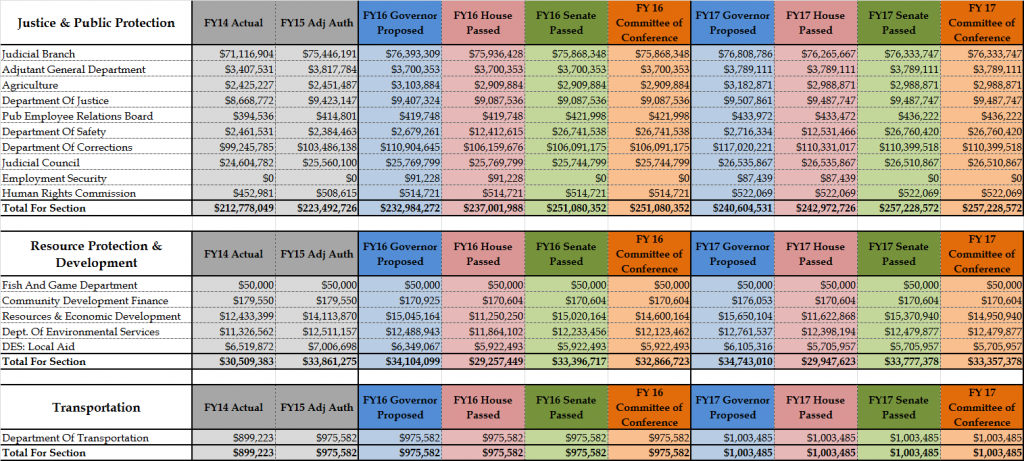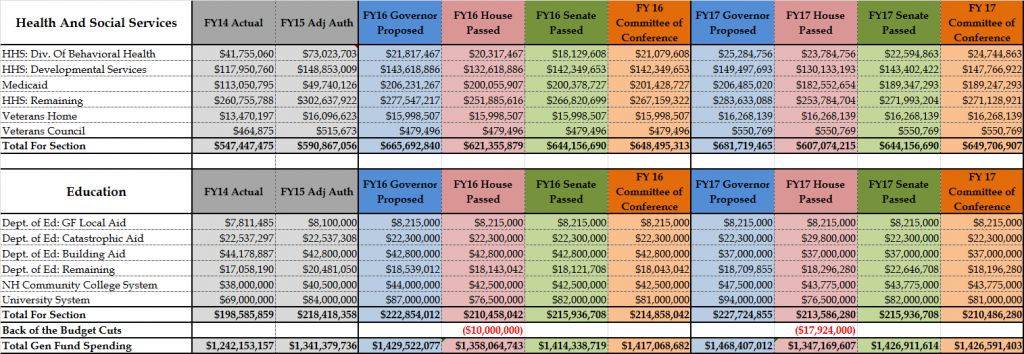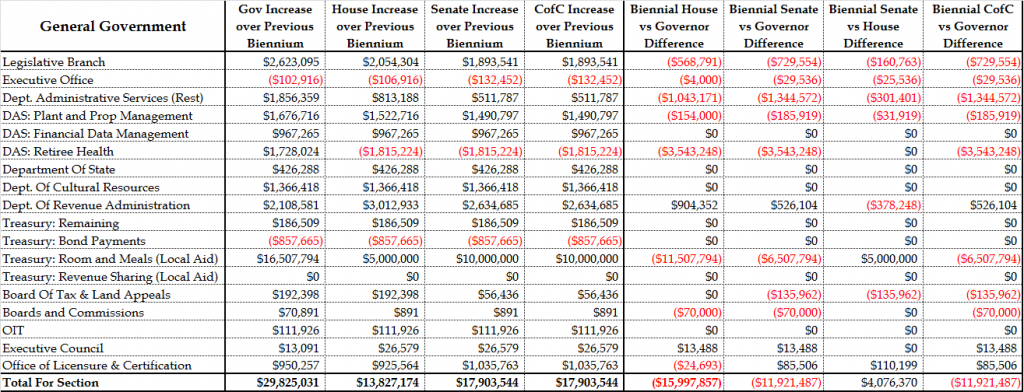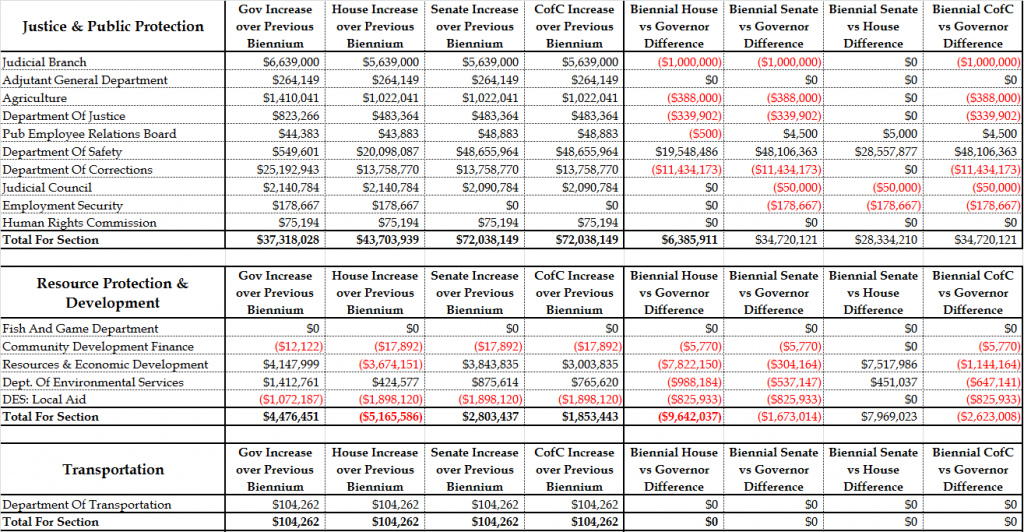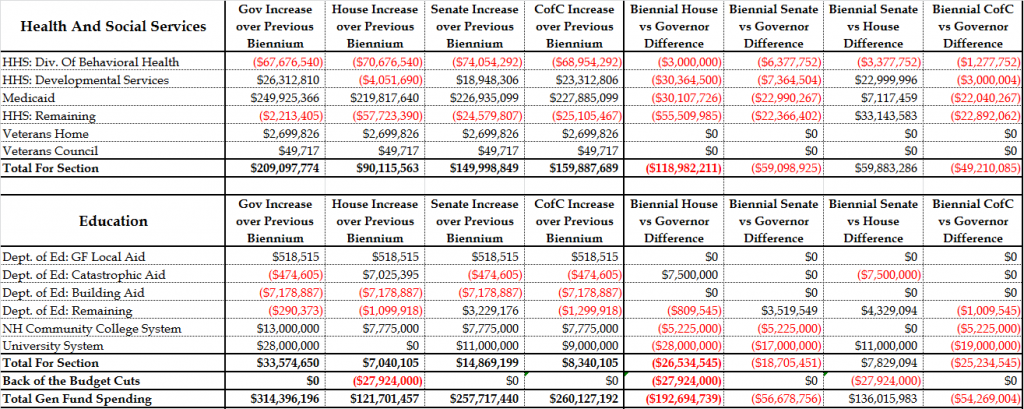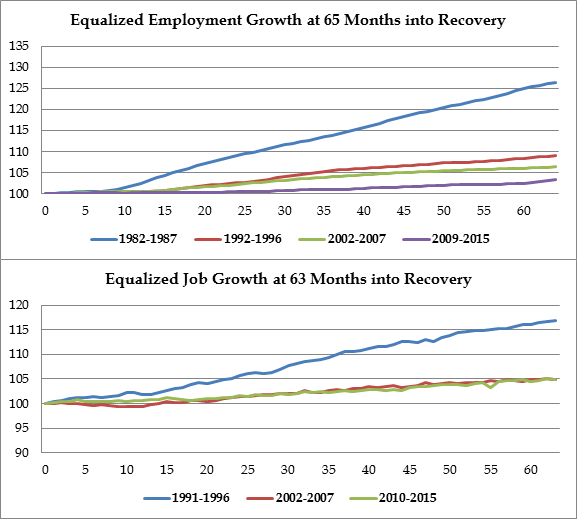June 2015
Joshua Elliott-Traficante
(Note: This is a revision of a paper originally published during the 2013 budget negotiations)
(Correction: A previous version of this paper incorrectly stated that the 2003 continuing resolution was for 3/12ths of the FY2003 budget. It was set at a rate of 3/12ths of the budget passed, but vetoed in 2003.)
What happens if there is no state budget by June 30? With the Legislature and Governor at such odds on the matter, it is a distinct possibility. It would not be that unusual either. New Hampshire has resorted to temporary budget six times since the end of World War II: 1949, 1955, 1959, 1971, 1977, and 2003.
The state’s budget is not designed to be perpetual; rather it requires reauthorization every two years. As a result, the state’s legal authority to spend money expires at the end of the last day of the second fiscal year of the biennium: June 30.
If a traditional two year budget has not passed, to keep the state functioning and allow more time for negotiations, the legislature instead passes a temporary budget, called a Continuing Resolution. The funding level of the last four continuing resolution have been a fraction of the budget about to expire. For example a 3 month resolution would be 3/12ths of the funds spent in the just ended fiscal year.
Given the historical precedent, if the Legislature and Governor are unable to agree on a budget and instead opt for a continuing resolution, the most likely scenario would be a 3 month continuing resolution for 3/12ths of the expenditures made in Fiscal Year 2015. However, the legislature has the discretion to set the duration of a continuing resolution for whatever they see fit.
Q: When is the Deadline for a Budget to Pass?
A: June 30. Spending authorization ends on June 30 of the second year of the biennial budget. To avoid a break in authorization, some type of measure must become law by the end of that day. There is a little room for maneuvering however. In 1993 a budget deal was reached on the 30th but a vote was not possible until the next day (i.e. July 1). Sitting Attorney General Jeffery Howard saw no legal issue, as long as work was finished “at any time on July 1.”[1] Of course the underlying assumption in this instance was that the measure would without question, pass both chambers and be signed into law.
Q: How does a Continuing Resolution Work?
A: Continuing resolutions provide spending authorization for a set period of time. Historically, they last anywhere from a week to three months. There is no required length for continuing resolutions, so the legislature can set them for however long they view as reasonable. The most recent continuing resolution, passed in 2003, was for three months.
Q: How is the funding level of a Continuing Resolution determined?
A: Earlier resolutions (1949[2] and 1955[3]) were specific dollar amounts, while the three month long resolutions passed in 1959[4] were each 1/12 of the Governor’s recommended budget. Most of the resolutions passed in the last forty years (1971[5], 1977 [i][6] a and 1977 [ii][7]) have been fractions of the just expired budget, based on their durations. For example, the 3 month resolutions of 1977[ii] was 3/12ths of the previous fiscal year’s appropriations. The exception is the 2003 continuing resolution, with spending levels set at 3/12ths of the budget that had been just vetoed.[8]
Q: Is there a companion bill (an HB 2 equivalent) that has all of the legal language?
A: No. The most recent continuing resolutions have contained a clause that keeps the laws that were part of the last budget in effect for the duration.
Q: Will a Continuing Resolution force the state to underpay our debt service obligations?
A: No. There is statutory language that allows the Treasurer to make bond payments from “…funds not otherwise appropriated.”[9] This would allow the Treasurer to make debt payments beyond what a continuing resolution provides. Payments would continue to be made in full with no risk for default.
In addition, the State’s bond payments are not paid in uniform allotments over the year. For example, the debt service paid in the first quarter of the fiscal year does not equal 25% of the total paid for the year. This repayment schedule provides an additional buffer against the threat of default under a continuing resolution.
Q: Once a Continuing Resolution has passed, can state agencies get emergency funding above and beyond what has been authorized?
A: Under a normal budget, if a state agency needs additional funds, they ask the Joint Fiscal Committee of the legislature, which has the authority to approve additional expenditures. Under past continuing resolutions, any additional spending must not only be approved by the Fiscal Committee, but by the Governor and Council as well.[10]
Q: Could the State’s Bond Rating be affected by a Continuing Resolution?
A: Credit rating agencies would undoubtedly view the state’s inability to pass a regular two year budget and the use of a continuing resolution negatively.[11]
However, as long as there is no break in budget authorization on July 1, the likelihood of a rating downgrade on these grounds alone is very small.
Q: Will the state lose Federal funds under a Continuing Resolution?
A: Past resolutions have included a clause that accepts all of the federals funds that the state is qualified to receive. Essentially it allows the state to continue receiving all of the Federal funds it did in the previous year for established programs.
Q: Will the state still be able to collect taxes?
A: Yes. The state’s authority to tax is derived from statutes independent of the budget. Regardless of what is in place on July 1, the state will not lose the ability to collect existing taxes at their current statutory rates.[12]
Q: What happens when a biennial budget eventually passes?
A: As soon as a two year budget passes, the continuing resolution is no longer in effect. In addition, the newly passed budget is retroactive to July 1.
Over the Edge
Q: What happens if a Continuing Resolution does not pass on or before June 30th?
A: Ideally continuing resolutions are passed before the previous budget authorization runs out. While there is some room for maneuver on July 1, that only applies in cases where a deal has already been made and there is no question that it will pass.
However, the state has been without any type budget authorization in place twice: in 1959 for two days, in 1977 for 12 days.
1959: A continuing resolution was delayed over a dispute whether or not to include funding for the controversial Department of Commerce. As a result, the state began fiscal year 1960 with no legal spending authority in place. The State Treasurer was forced to stop all certifying all payments, road contracts were held up and paychecks were delayed among other things. The Legislature put their differences aside and passed a month long resolution on July 2, retroactive to July 1. It took two additional month long resolutions before a budget was finalized.
1977: Budget troubles were caused by the inability of the House and Senate to agree on which taxes to increase. July 1 came and went with no action. The Attorney General issued a memo stating that the state be forced to shut down sometime between July 15 and July 22, unless some type of spending authorization was passed. A continuing resolution was finally passed on the 12th, retroactive to the 1st and continuing through to the 19th. The State Treasurer told the Legislature that if neither a budget nor continuing resolution were passed by the 19th, then the state’s credit rating would be in jeopardy. A deal on a two year budget was reached by July 19, but a 3 month continuing resolution passed instead. A final budget was not passed until late October.
Q: Would state employees still get paid when there is no budget authorization?
A: Historically, when a continuing resolution is eventually passed, it is retroactive to whenever the last authorization ran out, so the employees still receive their pay and any other expenses incurred are paid. In 1977, the Attorney General ruled that state employees did not have to report to work when there was no spending authorization in place, but when some form of budget was eventually passed, they would not be compensated for the time they were not at work.[13]
Q: Would the State’s Bond Rating be affected by a lack of Budget Authorization?
A: If neither a budget nor a continuing resolution passes by July 1, there is the very real risk for a credit rating downgrade. During the 12 days in 1977 while the state was without authorization, there were threats of downgrades from the rating agencies.[14]
2015?
Q: If Legislature and Governor cannot agree on a budget by June 30, 2015, what happens next?
A: If the Legislature and Governor cannot come to an agreement by the deadline, there are two options. If nothing is done, the state’s authority to spend would lapse, causing a government shutdown and alarming credit rating agencies.
The other option is to pass a continuing resolution, which would allow the government to continue to function as a new budget continues to be worked on. Given the historical precedent, the most likely scenario would be a 3 month continuing resolution for 3/12ths of the expenditures made in Fiscal Year 2015.
Click here to download a pdf version of this report
[1]Landrigan, Kevin, “All Sides Take Credit for Budget”, Nashua Telegraph, July, 1 1993.
[2] Laws of 1949, Chapter 275
[3] Laws of 1955, Chapters 229 and 274
[4] Laws of 1959, Chapters 174 & 203, 211 and 249
[5] Laws of 1971, Chapter 480
[6] Laws of 1978 {Special Session}, Chapter 1
[7] Laws of 1978 {Special Session}, Chapter 2
[8] Laws of 2003, Chapter 212
[9] New Hampshire RSA 10:6
[10] Laws of 2003, Chapter 212
[11] http://www.ncsl.org/issues-research/budget/late-state-budgets.aspx
[12] For example, under current statute, the tobacco tax will increase automatically by 10 cents on July 1, whether or not there is a budget agreement.
[13] Wysocki, David, “State Employees Can Go Payless,” Nashua Telegraph, July 2, 1977
[14] Herman, Bill, “Budget Lack Imperils Top NH Bond Rating,” Manchester Union Leader, July 14, 1977.


